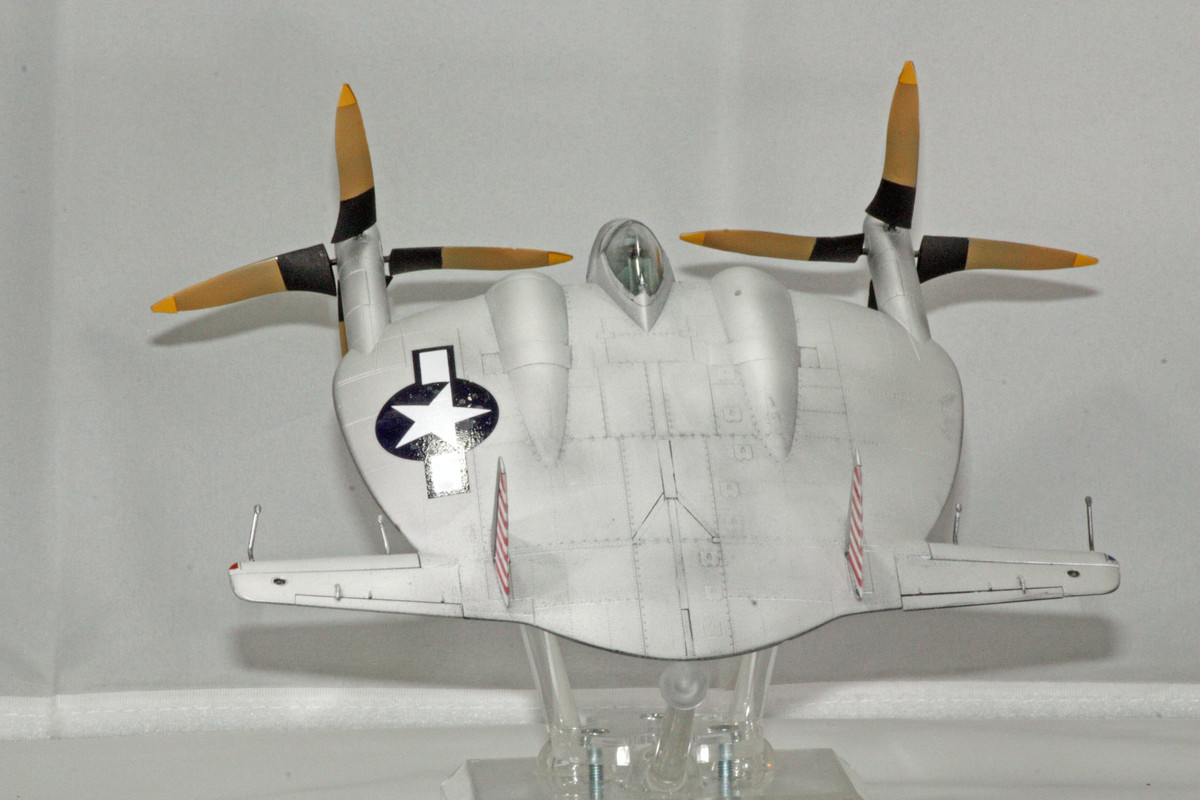My latest comes from a manufacturer new to me, Kitty Hawk. It is an unusual subject, Vought's last piston-driven aircraft, the XF5U-1 Flying Flapjack. For the 1940s, this thing has quite a science fiction appearance, and thus was interesting enough to me to take a chance on this kit.

The box art is nice but misleading as all get out. This aircraft never saw any action - hence the "X" - and in fact, barely got off the ground. Here is a nice article that describes the aircraft: https://oldmachinepress.com/2017/02/05/vought-xf5u-flying-flapjack/ I am pretty sure I read that Charles Lindbergh did a test flight in an earlier variant of the Flapjack, but can't find it to link here at the moment.
So on to the kit. This is an easy kit with not a lot of parts. As far as construction, I'd give it a 50-50 in that some areas go together and others look like either the engineers never bothered to evaluate their kit by building it themselves, or I did something seriously wrong. For instance, the gear doors fit very nearly perfectly, yet both prop shafts - 4 total parts - left a large gap along the shaft that no amount of pressure was going to close up. All in all, it was a mostly troube-free build that gives me hope that the other two Kitty Hawk kits I have in my stash - their F9F Cougar and F-86D Dog Saber - will go together decently as well.
The kit markings include an option for a total what-if with Uncle Sam to be on the upper half with a bunch of red and white stars, and a couple others that might have had some basis in reality (one of the photos in the linked article has nose art as I put on this build that was intended for the "midnight blue" Flapjack but not for the all-metal that I chose to build; I used the nose art just to give it a bit more pizzazz.) I will say that the decals performed very well, even the potentially troublesome yellow prop tips. The kit instructions point to another set of markings featuring a Japanese anime character that apparently KH could not secure licensing to use prior to shipping this thing, so the decals were cut from the sheet.
Now a couple of gripes about the kit. Top and underside feature access panels to the engines; these parts are the worst fit in the kit (edging out the intakes). The gripe here is not so much the poor fit as it is, why did they need separate parts for those panels as there is no interior engine detail included. Clearly, one could scratch build engines for this thing, but in that case you'd expect to have to cut the access panels out. Second, if you go to the trouble of manufacturing such wonderfully-fitting gear doors, why not do the same with the arrestor hook? The hook is actually fitted to the aircraft's top side, and would be extended beyond the rear of the airframe and dangle, where it would then catch the wire. The kit part is molded in an extended position, with no option provided to build it retracted. Yes, one can cut the thing apart to install, but the panels that cover the hook don't fit flush when you do that; and then simply leaving the hook piece off, which fits into a fairly deep "trench", means that the panels also do not sit flush unless you first build up those areas. That's what I ended up doing, not really a big deal but just some unnecessary work.
I opted to do the all-metal Flapjack. This one had very few markings, apparently, but it does have those red-and-white rudder stripes that I've always liked on US Navy aircraft. Paint is Vallejo metal color Aluminum. I used AK Interactive Real Colors Dull Dark Green for the cockpit, as well as some Mission Models flat black. Model Master Acryl Wood for the props, and Tamiya blue and red for the identification lights, and that was it.






Next up, I'm going with Academy's 1/72 B-17B Flying Fortress. I've built a lot of B-17s in my modeling life, but never before have I done a variant earlier than the F. It's a B-17 but there are some fairly clear design differences in the Fortress that wreaked havoc across Europe.